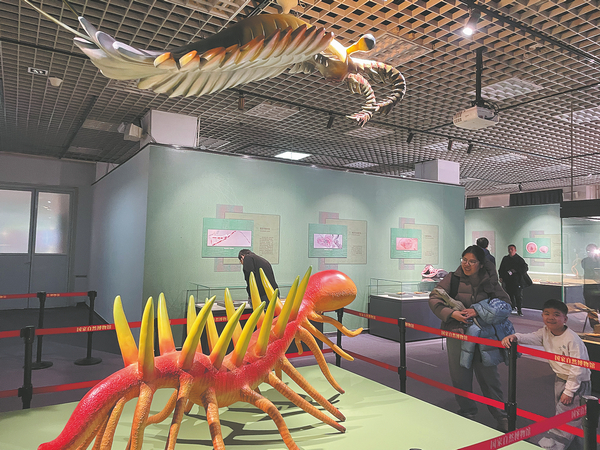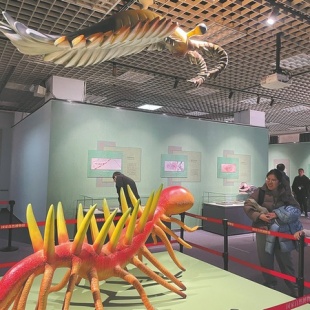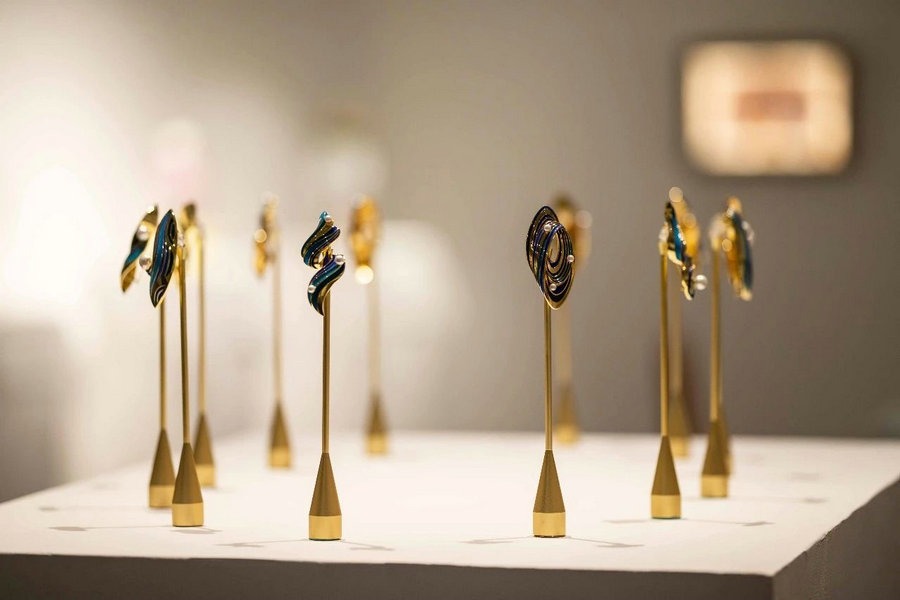Fossils attest to sea creatures' evolutionary boom during Cambrian period


At the ongoing exhibition, Miraculous Life in the Ancient Oceans: Exhibition of Premium Fossils from the Cambrian Chengjiang Biota, at the Natural History Museum of China in Beijing, visitors can follow fossil evidence tracing the evolution of life during the Cambrian period — the first geological period of the Paleozoic era — which lasted from 541 million to 485 million years ago.
Launched on Feb 25 and organized by the museum and the Chengjiang Fossil Site Museum of Natural History in Yuxi, Yunnan province, the three-month exhibition displays 210 exhibits, including fossils and models, that give visitors a glimpse into a prosperous picture of marine life during this period of evolutionary boom, according to Liu Lu, assistant researcher of the museum's Earth sciences department.
In 2012, Chengjiang was listed as a UNESCO World Heritage Site.
A major fossil site bearing witness to the Cambrian explosion and providing evolutionary evidence for early life-forms, it was deemed one of the most surprising scientific discoveries of the 20th century.
In 1984, paleontologist Hou Xianguang unearthed more than 280 fossil varieties in 20 categories at Chengjiang, 80 percent of which were new species. The fossils encompass almost all the ancestors of existing species.
Liu says that visitors will see how strange animals looked when life was confined to the seas over half a billion years ago.
"One of the star exhibits is a Myllokunmingia fossil, which is considered the oldest fish ever found, proving that fish evolved earlier than preciously thought," she says.
Discovered in 1999, the creature is only about 3 centimeters in length but has primitive features that hint at the beginnings of vertebrate evolution.
"It is the first time that the precious fossil is being exhibited in Beijing," says Wang Han, deputy director of the Chengjiang museum, who adds that the exhibition will tour around the country after Beijing.





































